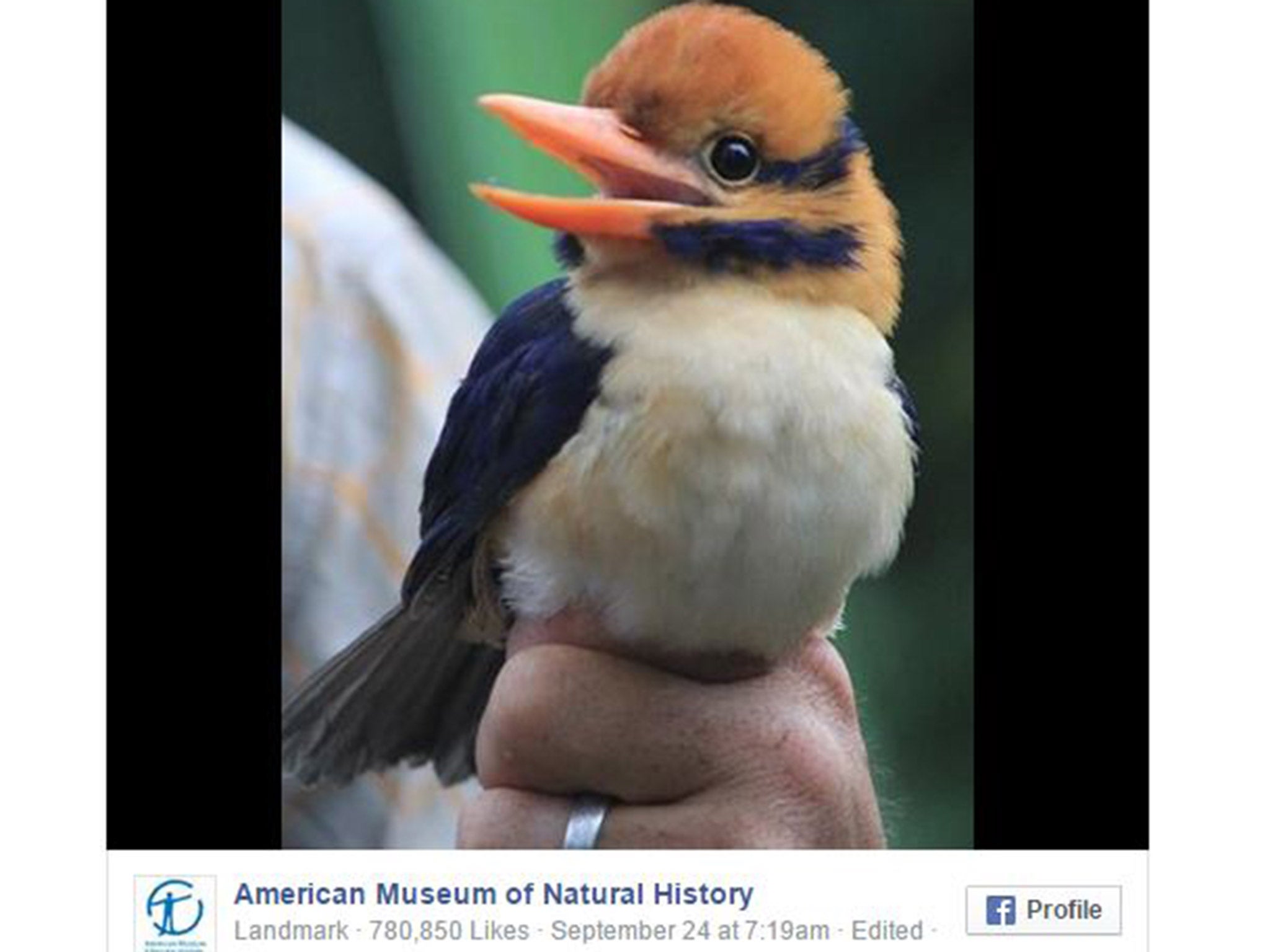Incredibly rare male mustached kingfisher photographed for first time by scientist - who promptly kills it
Fewer than 1,000 mature individuals are thought to be alive

Your support helps us to tell the story
From reproductive rights to climate change to Big Tech, The Independent is on the ground when the story is developing. Whether it's investigating the financials of Elon Musk's pro-Trump PAC or producing our latest documentary, 'The A Word', which shines a light on the American women fighting for reproductive rights, we know how important it is to parse out the facts from the messaging.
At such a critical moment in US history, we need reporters on the ground. Your donation allows us to keep sending journalists to speak to both sides of the story.
The Independent is trusted by Americans across the entire political spectrum. And unlike many other quality news outlets, we choose not to lock Americans out of our reporting and analysis with paywalls. We believe quality journalism should be available to everyone, paid for by those who can afford it.
Your support makes all the difference.A scientist has defended killing an incredibly rare and beautiful bird - shortly after capturing the first ever photograph of the male of its species ever taken.
The male mustached kingfisher, which is found only in the Solomon Islands and specifically one island called Guadalcanal, is often described as a "ghost bird", yet made a sudden surprise appearance to US researchers in late September this year.
Chris Filardi, director of Pacific Programs at the American Museum of Natural History, heard the distinctive "kokoko-kiew" call of the male bird, tracked it down - and then killed it, according to animal newsite The Dodo.
At first, his field journal on the museum's website did not indicate he had killed the bird - but it was later clarified that it had been "collected as a specimen for additional study."
He and his team's actions have divided the public and scientific community. Some ecologists have heavily criticised the "unnecessary slaying" of the rare species for conservation purposes, whilst Dr Filardi himself says the bird provides valuable scientific knowledge.
He said in a response to criticism on Audubon: "Although sightings and information about the bird are rare in the ornithological community, the bird itself is not. [...] As I wrote from the field, this is a bird that is poorly known and elusive to western science - not rare or in imminent danger of extinction."
So, he added, "the decision to collect an individual specimen [...] reflects standard practice for field biologists."
Ecological estimates for the bird's population range between 250 to 1,000 mature individuals in the region it inhabits, which classes it as "endangered". Further counts may prove it to be more common, according to Birdlife International.
Dr Filardi's said that that locals living in the area view the Mustached Kingfisher, known to them as Mbarikuku, as common - but this may only be the case for the very small geographical span in which the bird can be found on the globe.
Yet the scientist, who has been on the look-out for the bird for more than 20 years, maintains that taking one individual from a population will have important future benefits. These include accurate recording of the bird's features and any human impact on the birds' survival.
"With this first modern voucher of the kingfisher, the only adult male, we now have a comprehensive set of material for molecular, morphological, toxicological, and plumage studies that are unavailable from blood samples, individual feathers, or photographs.
"Detection and understanding of the impacts of marine pollutants, eggshell thinning from DDT, and anthropogenic body size shifts in widespread species, are examples of the power of natural history collections."
An ecologist has penned a strongly-worded and passionate condemnation of the decision to kill the bird, however. Marc Bekoff, professor emeritus of ecology and evolutionary biology at the University of Colarado, drew attention to the case in a blog for the Huffington Post.
"When will the killing of other animals stop? We need to give this question serious consideration because far too much research and conservation biology is far too bloody and does not need to be.
"Killing 'in the name of conservation' or 'in the name of education' or 'in the name of whatever' simply needs to stop. It is wrong and sets a horrific precedent for future research and for children."
Join our commenting forum
Join thought-provoking conversations, follow other Independent readers and see their replies
0Comments